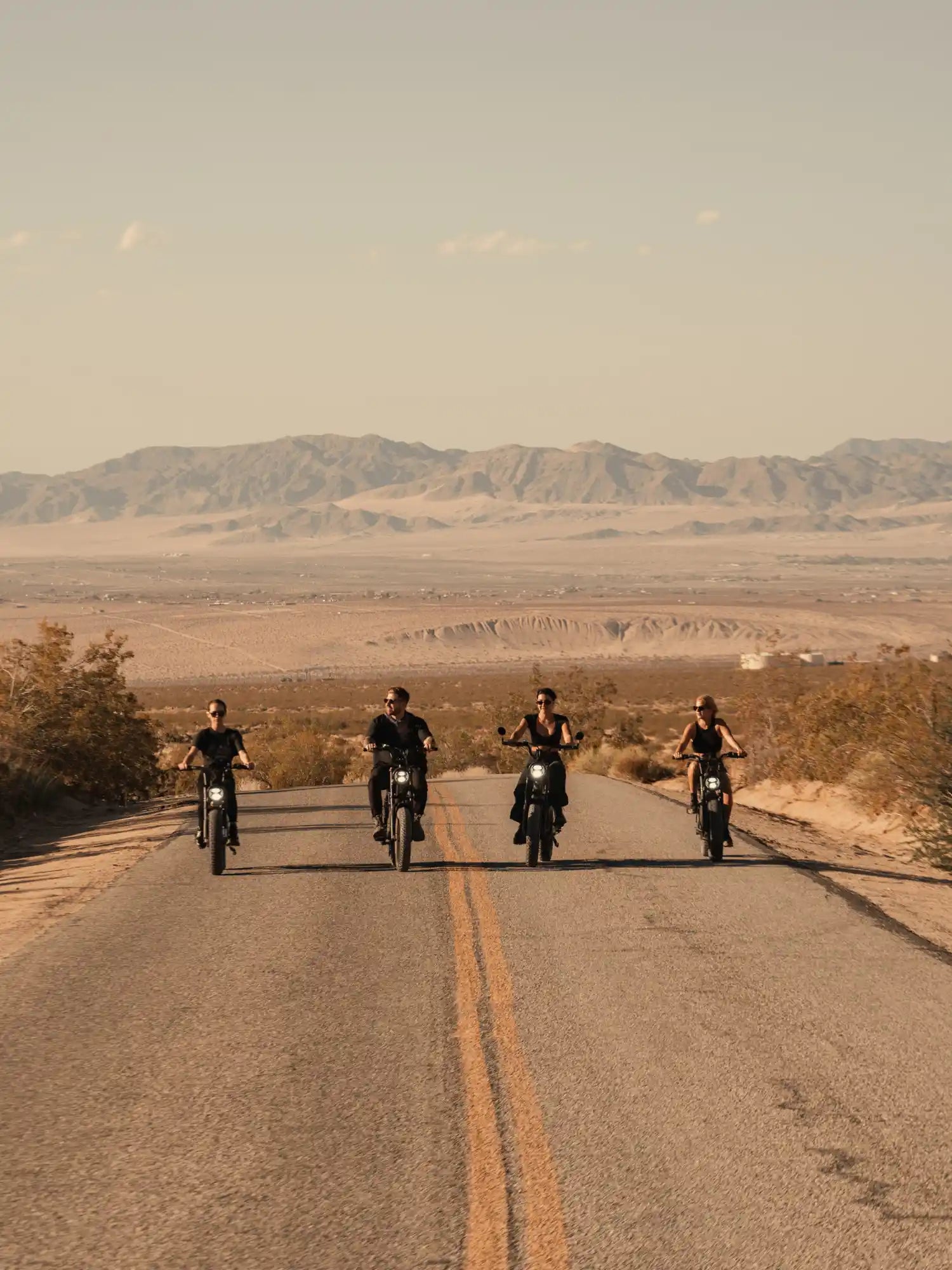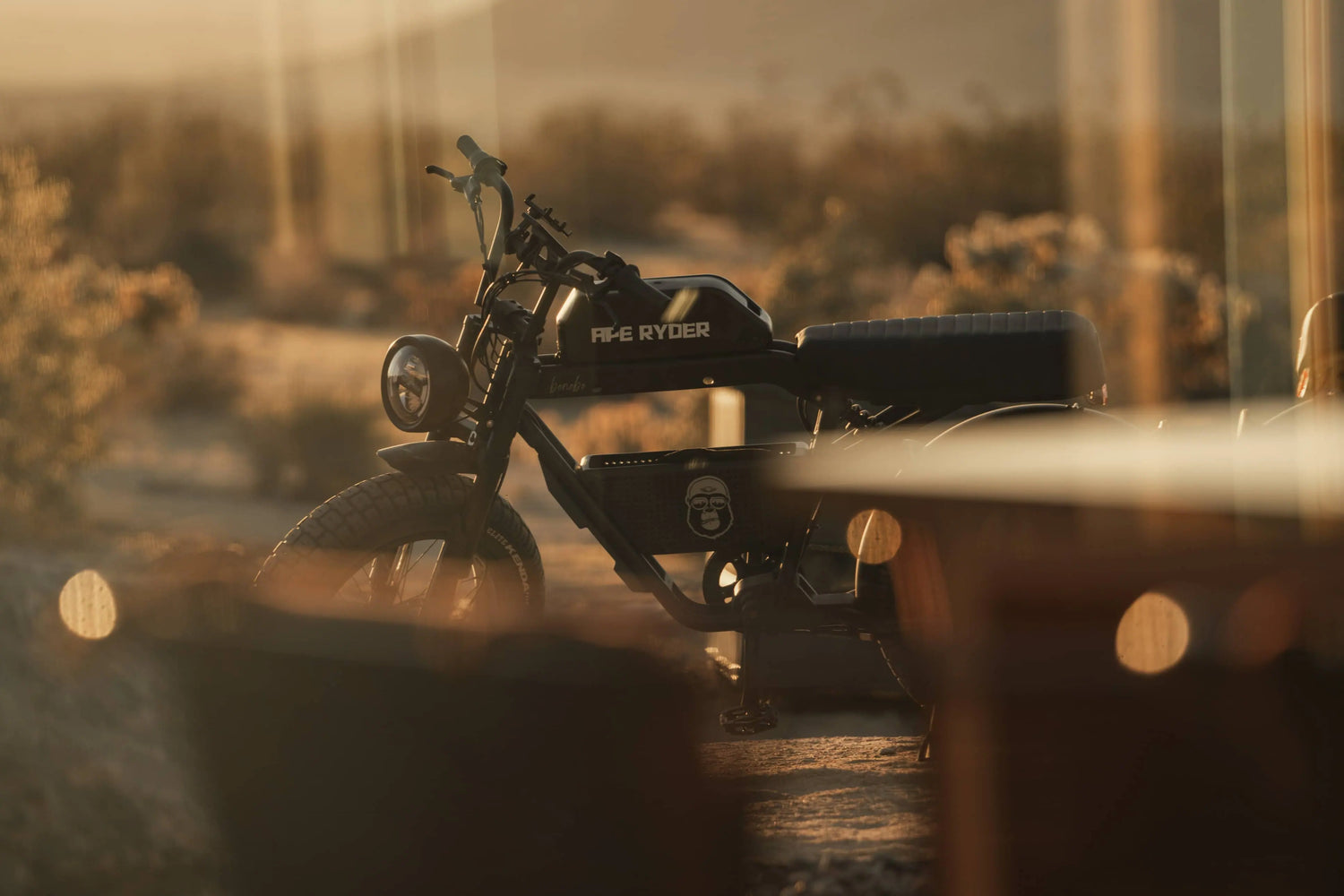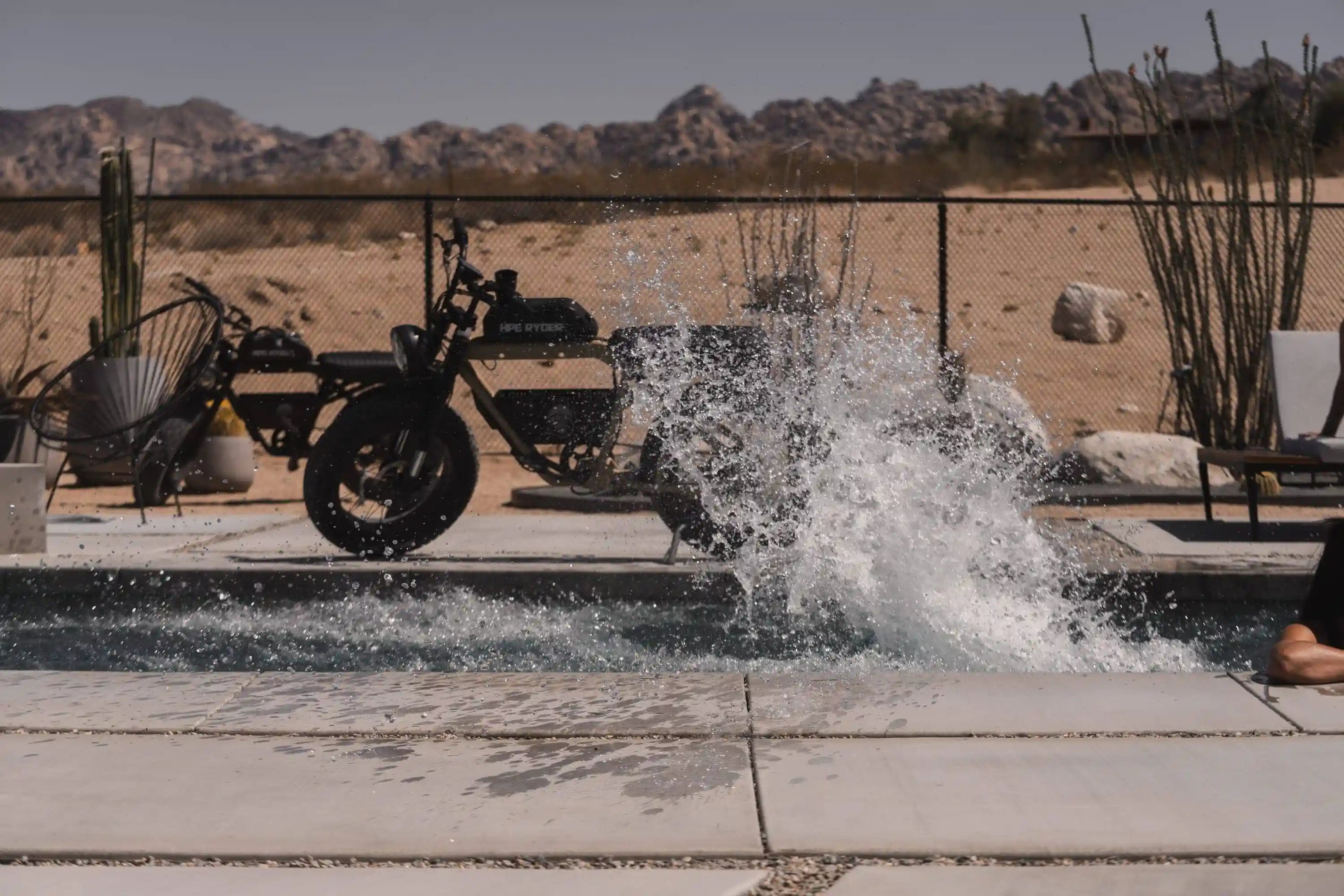E-biking in the dark is an electrifying feeling, offering a sense of freedom. The quiet streets, the cool breeze, and the twinkling city lights create an atmosphere that no daytime ride could offer. On the other hand, this time of day has its specific challenges and safety issues. Whether you are an e-bike enthusiast, a new rider, a sustainable commuter, or an adventure-seeker looking for a different experience in e-biking at night, this guide will show you how to take in nighttime e-biking safely.
Why Nighttime E-Biking?
There's more to the reasons why ebiking is great at nighttime, aside from just beating the traffic in daytime and getting cooler temperatures. You will also love the feeling of experiencing your city or neighborhood with much improvement in freshness. Reduced traffic and quiet streets result in a much more peaceful ride; you may chance upon noticing things that you could never be aware of during the day. The added advantage is that it's a green mode of transport and environmentally friendly to either commute or explore with.
Essential Tips for Safe Nighttime E-Biking
Equip Your E-Bike with Proper Lighting
A good front light is a must-have accessory for all e-bike riders. Find yourself an LED light that emits sufficient light to light up the roadway in front of you and afford you the best possible view of obstacles that may be in your path. Get one that has multiple modes: steady, flashing, even strobe, depending on the conditions you are going to ride in and to make you as visible as possible in oncoming traffic. Lights with a wide beam will significantly improve peripheral visibility to get you through any oncoming flow or bicyclists coming from either side.
Equally important, when the light conditions are poor or at night, a rear red light is indispensable in order to make your presence visible from the back. It shall have several modes, like the front light, to signal your presence to drivers or other bikers. The more sophisticated models feature a special function, known as a brake light: at the instant of braking, the light brightens to keep whoever is behind you informed of your stopping action.
Slap on some reflective tape or stickers onto your e-bike, and you are way more visible on the road. Put some reflective sidewalls and pedals on those tires; simple touches, but with just a strobe of light from a car's headlight, they could be highly visible and pop out in low-light conditions. Besides, other light-emitting accessories, such as helmets or bags, will raise the level of visibility and make drivers notice you from anywhere.
We designed all our e-bikes with high powered e-bike headlights. Let's take a look at our e-bike models here.
Wear Appropriate Gear
The first thing is to remember putting on a helmet while on the ebike. Wear one which is not only comfortable but has reflective elements, or it may have built-in lights that can help you out on the road. A properly fitted helmet adds so much-needed safety and actually reduces head injuries in the event of accidents.
With that in mind, wear material while riding with reflective strips or put on a reflective vest so you may attain a better position where drivers and other cyclists can view you clearly. Neon colors are most visible when it is low light, thus enabling others to view you even from a distance. Besides breathable fabrics should be provided capable of wicking off moisture; therefore, they will keep comfort while being conspicuous wherever their environment might be.
Wearing your cycling kit in layers is a good idea, since this will easily help you adapt to the changes in temperature throughout your ride. In such a way, one can put on more or take off clothes according to the current weather. If there's even the slightest possibility of rain, it's worth buying waterproof or water-resistant equipment that will keep you dry and in the best spirits. Riding comfort will enable you to better concentrate on the road and see what happens around, reducing chances of distractions that can lead to accidents.
Plan Your Route
Plan your nighttime ride to stick with routes you know in general, especially if you're new to biking after dark. Knowing the general lay of the land helps you anticipate potholes, unexpected turns, or changes in elevation that may be highly problematic at low light levels. Knowing the route helps raise confidence and reduces anxiety while riding.
Paying attention to the route chosen will be important, not only for seeing what is around you but also so you can be seen by drivers and pedestrians alike. Streets with lighting down the sidewalk or bike lanes that are lit themselves will be ideal. Other options may include parks or community areas that often have better lighting overall.
Other perfect ways include taking quieter streets or dedicated bike paths that limit the chances of accidents on your ride. At night, areas of traffic could be intimidating and hazardous because it would be increasingly difficult to see and predict fast-moving traffic. On quiet streets, you will get time to enjoy the ride since there is no turmoil of keeping across the traffic. You can sit back, relax, and take in the views of the outing and cycling under the stars.
Be Aware of Your Surroundings
The normal everyday riding calls for one to be all eyes and ears, even more so on this night ride, since night riding requires more caution and alertness. The darkness can conceal obstacles, especially those that will suddenly jump onto your path-be it pedestrians or animals. Being attentive means not just seeing but also listening for the sounds which may show an approaching vehicle or other riders.
It would also be a good idea to avoid wearing headphones or to interact with your phone as you ride in the dark. Your full attention should be on the road and events unfolding around you so that you can react promptly to whatever may happen. Distracted riding could result in a number of accidents, especially when visibility is poor. Consider leaving your phone put away until you arrive at your destination or during breaks.
These are potholes and debris and uneven surfaces that, in the dark, are more difficult to see. Awareness of these factors greatly helps minimize risks. Slowing down through untried areas-especially when the area is not well-lit-will allow you more time to spot and maneuver around any obstacles in a safe way. If you notice any segment that is obviously tricky, don't be afraid to get off and start walking your bicycle until you find a place where it's safe to continue.
Ride Defensively
Always signal your intentions to the other road users before a night ride. For turns and stops, do hand signals so that everyone on the road knows your next move. Predictability reduces accidents since the drivers will be in a better position to anticipate your next move. If possible, try eye contact with the drivers to be assured they see you.
Obey all traffic signs and signals. It is very important for your safety and the safety of others. Riding in designated bike lanes, where available, is just not an option; it's the rule. Following the rules of the road helps create a predictable environment for all users-biker included-which can reduce misunderstandings and potential accidents.
A night ride should be adjusted to road and visibility conditions, that is, going slower is usually safer, as your capability of seeing and reacting is reduced. Such an approach will give you not only more time to respond, but also the possibility of more comfort while passing probably tricky areas. It's better to get to a place safe but late than early with possible damage.









Leave a comment
All comments are moderated before being published.
This site is protected by hCaptcha and the hCaptcha Privacy Policy and Terms of Service apply.